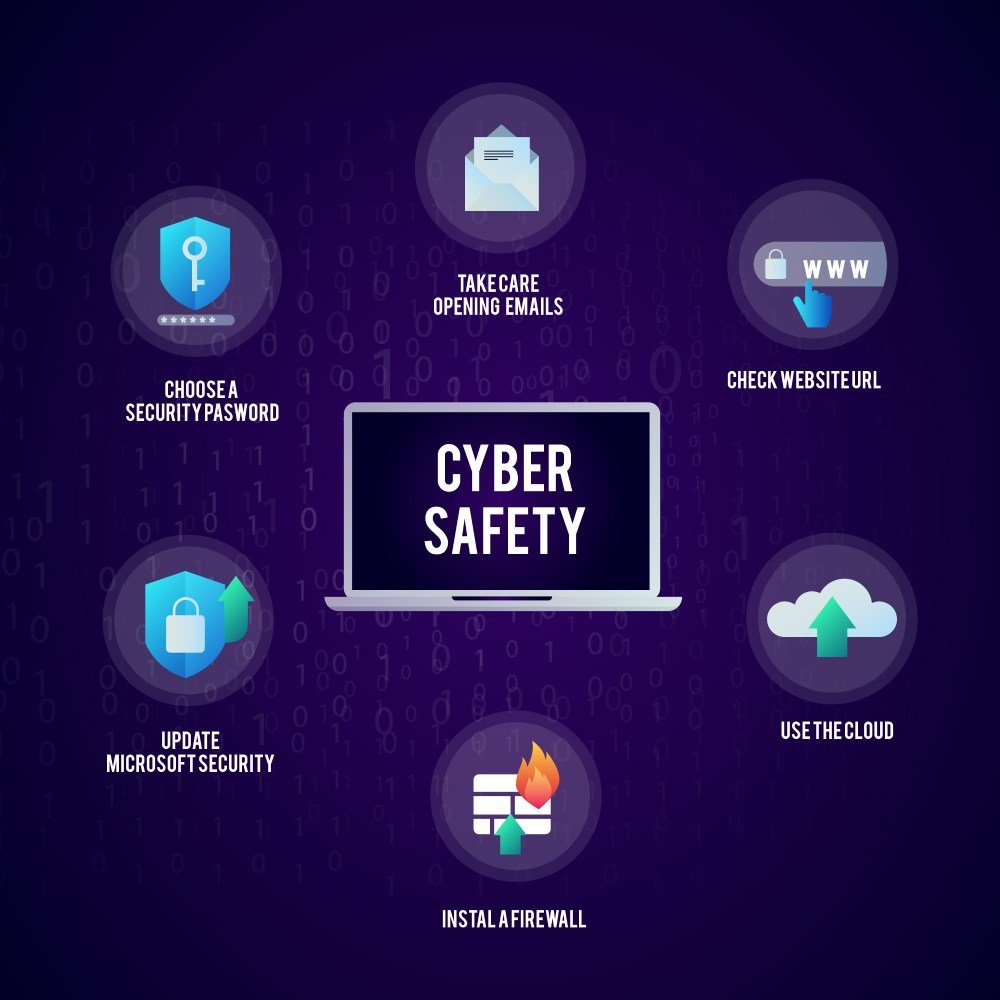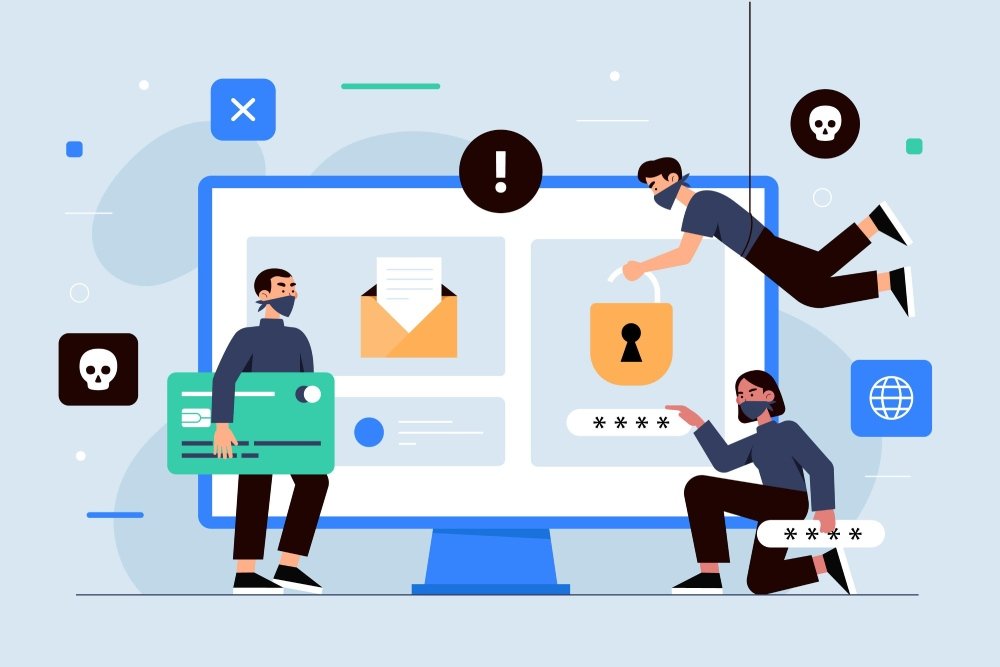
Knowing cybersecurity basics is important for safeguarding your networks and devices from any acts of assaults, damage, or sabotage as well as unauthorized access.
It works as the last line of defense against data security crises and new unnecessary vulnerability to cyber-attacks.
Nowadays, cyberspace poses a threat to one’s digital assets, making it a necessity to learn the cybersecurity basics for both individuals and businesses.
In this blog, we will look at the core concepts of cybersecurity basics in great detail, examining both old and new cyber threats, and providing readers with a practical set of techniques and guidelines for staying safe online.
We’ll uncover the foundation of cybersecurity basics, concepts and potential dangers, what is SIEM (Security Information and Event Management), and a brief analysis of cyber security today.
This guide gives you a good starting point in The Spectrum of Cybersecurity Basics.
Table of Contents
ToggleUnderstanding Cybersecurity Basics

In order to size up cybersecurity basics, it is vital to realize the basic terminologies as well as the fundamental concepts. Some key terms include:
Network: A network of the traversing and interconnecting entities capable of exchanging information.
Internet: A universal web of devices that relays information between the devices across the network.
IP Address: A single and exclusive indication code given to each device together as a network for finding and communicating.
MAC Address: The router assigns a unique identifier to the network interface controller that uses it to communicate within a local network to accomplish these functions.
DNS: It is the Domain Name System, which allows the human-readable URLs to be mapped into IP addresses to the internet destinations.
DHCP: The Dynamic Host Configuration protocol dynamically assigns IP addresses and other network configuration parameters to devices on a network.
Router: A computer information system that includes a switch function information and routes it between different computer networks.
The utilization of this information will be the starting point of the implementation of efficient cybersecurity measures and the reduction of cyber threats.
Key Cybersecurity Concepts

Cybersecurity is multitonality including but not limited to safeguarding the informatics systems, networks, and information from attacks and threats posed by the vulnerabilities.
These elements include:
Endpoint Security: Protecting devices such as laptops, desktops, and smartphones from malware, intruders unauthorized access, and other data leakage sources.
Data Security: Providing data encryption, access control, and data loss prevention techniques to prevent sensitive data from getting compromised.
Identity and Access Management: Authentication of users and assignment of the necessary permission for using the resources.
Database and Infrastructure Security: This includes more server protection, network infrastructure component securing, and database safeguarding.
Cloud Security: Installing security controls to protect the services and resources deployed in the control.
Mobile Security: Protecting smartphones and applications from dangers like malware, app leaks, and browsing vulnerable websites.
Disaster Recovery and Business Continuity Planning: Making sure that vital systems which can work in such cases remain active known as “disaster recovery” or “operational running” signals the word, “running”.
End-User Education: Educating people and giving them a set of guidelines for cyber safety with the help of training and workshops.
Data Loss Prevention: The detection and prevention of data breach, a case which consciously aims at protecting such sensitive information from unauthorized transfer.
Intrusion Detection and Prevention Systems: Keeping track of systems and networks for any dangers and take subsequent protective measures.
These principles are the basis of the truth and integrity of data and systems, ensuring that they are protected from unauthorized access and provided in an on-demand manner.
Common Cyber Threats

Cybercrime exists in many faces bringing fears even to individuals, organizations, and critical network architecture.
Some common cyber attacks include: Some common cyber attacks include:
Distributed Denial of Service (DDoS): Attacking with an amount of traffic that overwhelms devices or network infrastructure of the target, which results in these devices refusing to process any other queries from genuine originators.
Man-in-the-Middle (MitM): An intruder intercepts, even modifies, the flow of information between the sender and the receiving party, additionally spying or assuming the place of one or both participants.
Password Attacks: Attempted unauthorized access to gain by cracking or specifically guessing passwords; possibly a result of brute-force or dictionary attacks.
Email Attacks: Misusing email as a carrier of viruses carries out many odd tasks – phishing (user deceiving), spying (forging the trust personality), and delivery of viruses through attachments or hyperlinks.
Malware: The bad code such as virus, worm, trojan horse, ransomware, botnets, etc., created with the sole intention of breaking, frying, or unlawfully entering into or attending to your systems or networks.
Staying continuously in the loop about these everyday cybersecurity basics threats and enforcing suitable security measures is highly advisable.
Cybersecurity Basics Best Practices

Implementing cybersecurity basics best practices is crucial for individuals and organizations to safeguard against cyber threats and protect sensitive data. Here are some essential best practices:
Keep Software Updated: Software and applications should be updated regularly to address the present weaknesses and flaws. It also includes the latest version of OS and firmware.
Use Strong Passwords and Multi-Factor Authentication: Use strong, unique passwords for each account; combining uppercase, lowercase, numbers, and special characters.
Exercise Caution with Links and Attachments: Be aware of harmful links, e-mails, pop-ups, and attachments as these may contain malware and lead to phishing activities.
Implement Comprehensive Security Solutions: Ensure effective payment mechanisms with multi-layer encryptions and transaction patterns that avoid hold-up by third-party intermediaries.
Backup Data Regularly: Regularly back up important data either offline or in the cloud to provide a smooth business continuity flow and enable recovery in times when a system has been hacked or ransomware is used.
Educate and Train Employees: Give preference to cybersecurity basics training for the employees, including such subjects as phishing, social engineering, password security, and procedures related to that.
Implement Access Controls and Data Protection Measures: Restrict the number of people who can supervise and control critical information and operations so that only authorized personnel can do so.
Develop a Cybersecurity Plan and Incident Response Strategy: Design systemized cybersecurity basics, plans, processes, and incident response mechanisms to safeguard business operations and cyber risks based on the specificities of the organization.
Consider Cyber Insurance Coverage: Analyse the necessity of cyber insurance (coverage) to be able to prevent financial losses and liabilities that emanate from data leaks, cyber-attacks, and other security-related situations.
By adhering to these cybersecurity basics best practices, individuals and organizations can significantly reduce their risk exposure and enhance their overall cyber resilience.
Cybersecurity Basics Roles and Certifications

After learning the cybersecurity basics you’re all set to start learning about cybersecurity in detail.
There are many high-paying jobs and good certifications that you can get in this field after learning about cybersecurity basics.
Cybersecurity Job Roles
Cybersecurity narrows down to a wide field that experiences a lot of highly specialized functions and certifications.
Some major cyberspace callings for example are those that involve access control, network security, security management, security architecture, cryptography, and physical security.
Common job roles in this domain are:
Chief Information Security Officer (CISO): Leads the implementation of an organization’s information security program, designs security strategies, and is in charge of managing security teams.
Forensic Computer Analyst: Does cybercrime inquiries, restores information from hacked systems, and uses their expertise to give sworn testimony during hearings.
Information Security Analyst: Recognize risks to security, put security measures in place, and control the system to detect, if any, threats.
Penetration Tester: Engage in ethical hacking; use it to reveal vulnerabilities in the systems and networks.
Cybersecurity Certifications
Some top certifications include:
| Certification | Description |
| Certified Ethical Hacker (CEH) | Demonstrates skills in penetration testing, attack detection, and prevention. |
| CompTIA Security+ | An entry-level certification validating core skills for any cybersecurity basics role. |
| Certified Network Defender (CND) | Validates skills in network security, risk management, and incident response. |
| Certified Information Systems Security Professional (CISSP) | An advanced certification for experienced professionals, demonstrating expertise in designing, implementing, and monitoring cybersecurity programs. |
| ISACA CSX Cybersecurity Basics | Validates understanding of cybersecurity basics concepts, principles, and best practices. |
The latter skills are technical knowledge and programming, understanding cybersecurity basics and threats, solving problems, communication, and continuing their study all the time.
Frequently Asked Questions (FAQs)
I hope you get a thorough insight on the topic through the article, having read it.
I assume you might be having the same questions in your head so allow me to tackle the most frequent ones.
So, let’s explore them.
Q1. What Are The Key Components of Cyber Security Basics?
The five critically essential aspects of a cyber security program are as follows: change, continuity, costing, compliance, and coverage.
These are the basic elements of cybersecurity that help businesses protect their network resources against cyber threats.
Q2. What Are The Fundamental Principles of Cyber Security?
The fundamentals of cybersecurity basics are:
Govern: That is the issue of the security risks recognition and the risk handling.
Protect: Placing in place controls mature processes to deal with risks is essential.
Detect: The principle axis is the discovery and understanding of what is described as a cyber security event to fabricate an incident.
Respond: It’s the thing that relates to us being able to control and restore from the cyber security incidents.
Q3. What is The Essence of Cyber Security?
Cyber security is the protection of systems, networks, programs, devices, and data from digital attacks and cyber threats.
It includes technologies, procedures, and mechanisms for reducing cyber risk and the development of unauthorized access to systems, networks, and technologies.
Q4. How Can a Beginner Start a Career in Cyber Security?
At the beginning, opening-level jobs like Cybersecurity Specialist, Technician, Incident Responder, and IT Auditor can be the perfect options for a newbie.
In due course, after you get the required experience and skills, you may move up to the positions of Cybersecurity Consultant, and Penetration Tester, which will prepare you to take on more sophisticated jobs in the cybersecurity industry.
Conclusion
In the age of advanced digital technologies, cybersecurity basics have now transformed into a basic knowledge requirement and not an option.
This very complete tutorial has taught us a lot about cybersecurity basics covering its major concepts, likely threats, best practices, roles, and certifications.
A good cybersecurity posture not only ensures maximum protection of data, but also creates an environment for preservation of trust, reputation, and business continuity.
Apply the chosen strategy and best practices described in the manual and move on to advanced cybersecurity from cybersecurity basics.
You May Like Also:
5 thoughts on “Cybersecurity Basics: Unveiling Essential Knowledge You Need To Know”